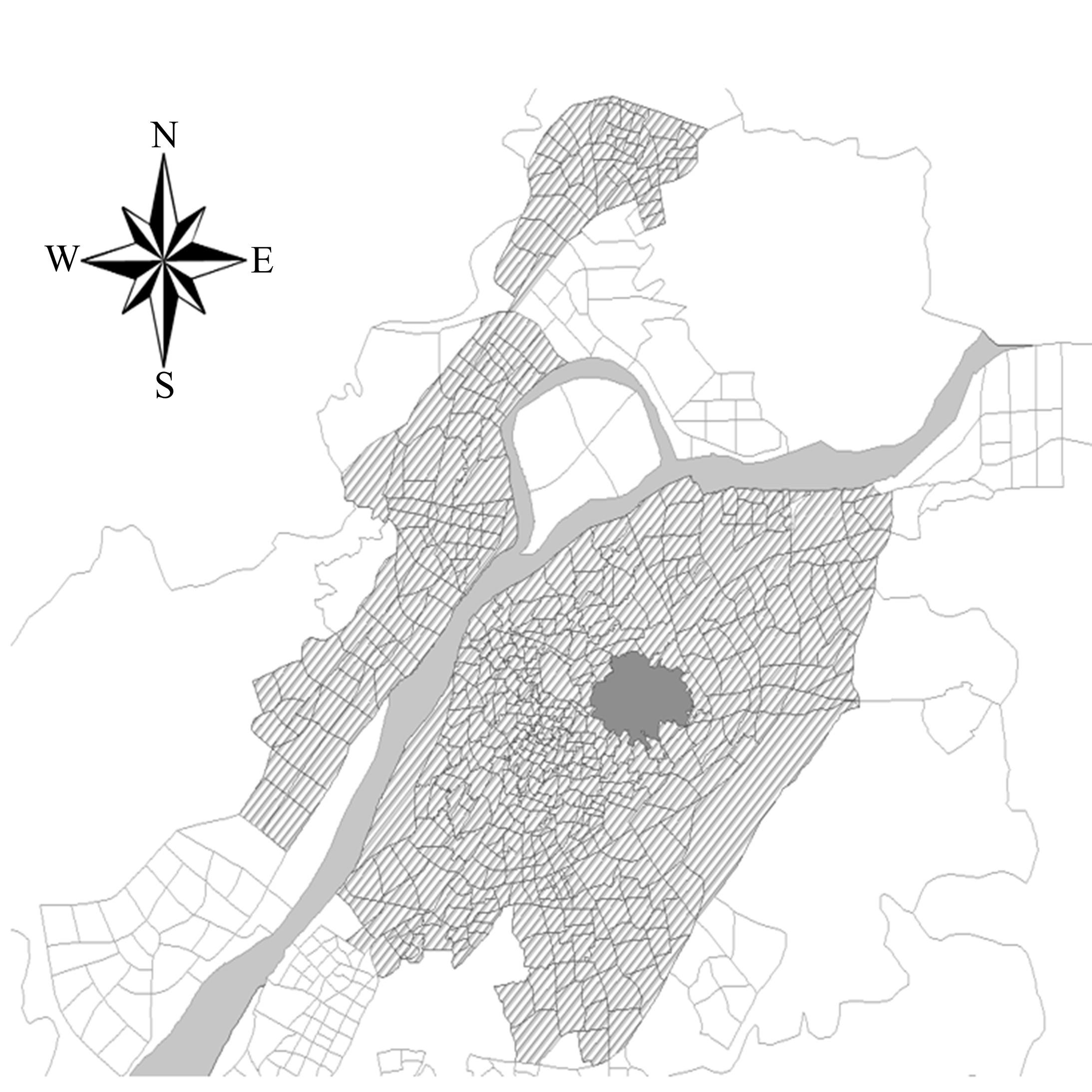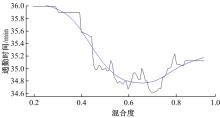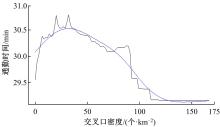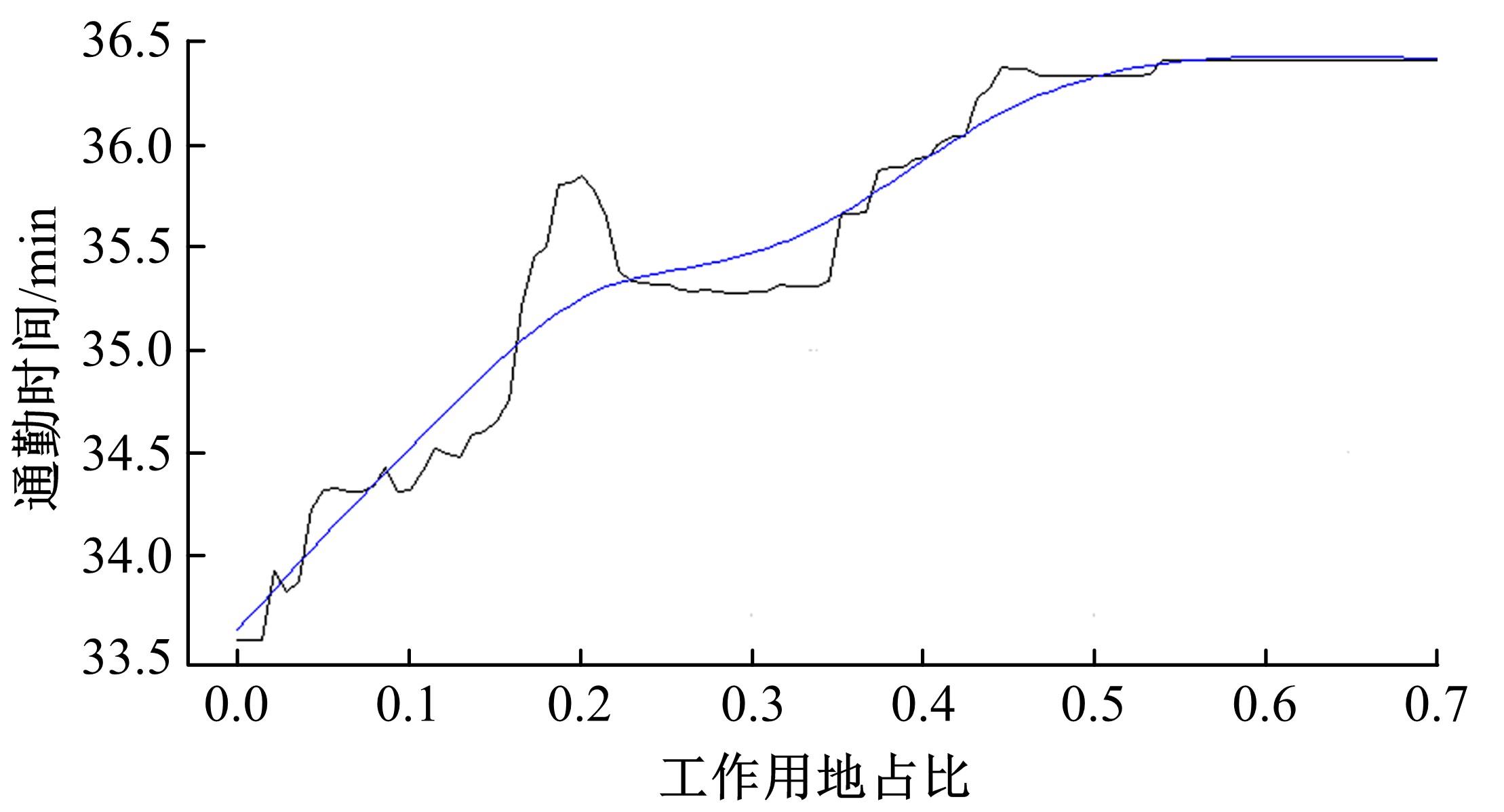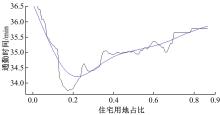吉林大学学报(工学版) ›› 2022, Vol. 52 ›› Issue (11): 2568-2573.doi: 10.13229/j.cnki.jdxbgxb20210530
• 交通运输工程·土木工程 • 上一篇
考虑城市建成环境非线性作用的通勤时间模型
- 1.上海理工大学 管理学院,上海 200093
2.中国地震局工程力学研究所 地震工程与工程振动重点实验室,哈尔滨 150080
3.东南大学 交通学院,南京 210096
Residents' commuting time model under the nonlinear impact of urban built environment
Jing-xian WU1,2( ),Hua-peng SHEN1,Yin HAN1(
),Hua-peng SHEN1,Yin HAN1( ),Min YANG3
),Min YANG3
- 1.Business School,University of Shanghai for Science and Technology,Shanghai 200093,China
2.Key Laboratory of Earthquake Engineering and Engineering Vibration,Institute of Engineering Mechanics,China Earthquake Administration,Harbin 150080,China
3.School of Transportation,Southeast University,Nanjing 210096,China
摘要:
为探索城市建成环境对居民通勤时间的非线性作用,以南京为例,构建了包含个人家庭属性、通勤出行特征和交通小区建成环境的梯度提升决策树模型。结果显示:三类属性中,居民通勤出行特征对通勤时间的累计影响程度最大(52%),建成环境影响次之(38.88%);建成环境指标对通勤时间的非线性作用显著,其中,区域用地混合度和居住用地占比都显现出显著的阈值效应。研究可为后续精准化城市区域规划和设计提供科学的理论与依据。
中图分类号:
- U491.1
| 1 | 孙晓雪. 通勤时间对城市居民幸福感的影响研究[D]. 北京: 北京交通大学经济管理学院, 2018. |
| Sun Xiao-xue. Research on the impact of commute time on urban resident happiness[D]. Beijing: School of Economics and Management, Beijing Jiaotong University, 2018. | |
| 2 | 尹超英, 邵春福, 王聘玺, 等. 基于多层模型的城市建成环境对通勤行为的影响[J]. 交通运输系统工程与信息, 2018, 18(2): 122-127. |
| Yin Chao-ying, Shao Chun-fu, Wang Pin-xi, et al. Impacts of built environment on commuting behavior based on a multilevel modeling approach[J]. Journal of Transportation Systems Engineering and Information Technology, 2018, 18(2): 122-127. | |
| 3 | Zhang H, Xu S, Liu X, et al. Near "real-time" estimation of excess commuting from open-source data: evidence from China's megacities[J]. Journal of Transport Geography, 2020, 91(4): 102929. |
| 4 | Sun B, Yin C. Impacts of a multi-scale built environment and its corresponding moderating effects on commute duration in China[J]. Urban Studies, 2020, 57(10): 2115-2130. |
| 5 | Ding C, Cao X, Wang Y. Synergistic effects of the built environment and commuting programs on commute mode choice[J]. Transportation Research Part A: Policy and Practice, 2018, 118: 104-118. |
| 6 | 尹超英, 邵春福, 黄兆国, 等. 基于梯度提升决策树的多尺度建成环境对小汽车拥有的影响[J]. 吉林大学学报: 工学版, 2022, 52(3): 572-577. |
| Yin Chao-ying, Shao Chun-fu, Huang Zhao-guo, et al. Investigating influences of multi-scale built environment on car ownership behavior based on gradient boosting decision trees[J]. Journal of Jilin University (Engineering and Technology Edition), 2022, 52(3): 572-577. | |
| 7 | Koushik A N, Manoj M, Nezamuddin N. Machine learning applications in activity-travel behaviour research: a review[J]. Transport Reviews, 2020, 40: 288-311. |
| 8 | Zhao X, Yan X, Yu A, et al. Prediction and behavioral analysis of travel mode choice: a comparison of machine learning and logit models[J]. Travel Behaviour and Society, 2020, 20: 22-35. |
| 9 | 熊丽芳, 甄峰, 钱前, 等. 基于CHAID决策树方法的城市居民通勤时间影响因素分析——以南京为例[J]. 人文地理, 2013(6): 68-73. |
| Xiong Li-fang, Zhen Feng, Qian Qian, et al. The influencing factors analysis of city residents' commute time based on CHAIN model of decision tree: a case study of Nanjing[J]. Human Geography, 2013(6): 68-73. | |
| 10 | Cheng L, Vos J D, Zhao P, et al. Examining non-linear built environment effects on elderly's walking: a random forest approach[J]. Transportation Research Part D: Transport and Environment, 2020, 88:102552. |
| 11 | Tao T, Wang J, Cao X. Exploring the non-linear associations between spatial attributes and walking distance to transit[J]. Journal of Transport Geography, 2020, 82: 102560. |
| [1] | 方松,马健霄,李根,沈玲宏,徐楚博. 城市快速路右侧车道移动作业区行车风险分析[J]. 吉林大学学报(工学版), 2022, 52(8): 1786-1791. |
| [2] | 宋现敏,杨舒天,刘明鑫,李志慧. 站点间公交行程时间波动特性及预测方法[J]. 吉林大学学报(工学版), 2022, 52(8): 1792-1799. |
| [3] | 张玮,张树培,罗崇恩,张生,王国林. 智能汽车紧急工况避撞轨迹规划[J]. 吉林大学学报(工学版), 2022, 52(7): 1515-1523. |
| [4] | 郑植,耿波,王福敏,董俊宏,魏思斯. 既有低等级混凝土护栏防护能力提升[J]. 吉林大学学报(工学版), 2022, 52(6): 1362-1374. |
| [5] | 吴文静,战勇斌,杨丽丽,陈润超. 考虑安全间距的合流区可变限速协调控制方法[J]. 吉林大学学报(工学版), 2022, 52(6): 1315-1323. |
| [6] | 徐洪峰,陈虹瑾,张栋,陆千惠,安娜,耿现彩. 面向网联汽车环境的单点全感应式信号配时技术[J]. 吉林大学学报(工学版), 2022, 52(6): 1324-1336. |
| [7] | 盖松雪,曾小清,岳晓园,袁子豪. 基于用户-系统双层优化算法的车位引导模型[J]. 吉林大学学报(工学版), 2022, 52(6): 1344-1352. |
| [8] | 李先通,全威,王华,孙鹏程,安鹏进,满永兴. 基于时空特征深度学习模型的路径行程时间预测[J]. 吉林大学学报(工学版), 2022, 52(3): 557-563. |
| [9] | 冯天军,孙学路,黄家盛,田秀娟,宋现敏. 基于三种过街方式的两相位信号交叉口延误[J]. 吉林大学学报(工学版), 2022, 52(3): 550-556. |
| [10] | 李兴华,冯飞宇,成诚,王洧,唐鹏程. 网约拼车服务选择偏好分析及建模[J]. 吉林大学学报(工学版), 2022, 52(3): 578-584. |
| [11] | 尹超英,邵春福,黄兆国,王晓全,王晟由. 基于梯度提升决策树的多尺度建成环境对小汽车拥有的影响[J]. 吉林大学学报(工学版), 2022, 52(3): 572-577. |
| [12] | 贾洪飞,邵子函,杨丽丽. 终点不确定条件下网约车合乘匹配模型及算法[J]. 吉林大学学报(工学版), 2022, 52(3): 564-571. |
| [13] | 林赐云,谢天承,覃蔚,郭旭,李正浩,郑臻. 冰雪天气下交叉口信号配时优化方法[J]. 吉林大学学报(工学版), 2022, 52(10): 2316-2324. |
| [14] | 贾彦峰,曲大义,林璐,姚荣涵,马晓龙. 基于运行轨迹的网联混合车流速度协调控制[J]. 吉林大学学报(工学版), 2021, 51(6): 2051-2060. |
| [15] | 薛锋,何传磊,黄倩,罗建. 多式轨道交通网络的耦合协调度[J]. 吉林大学学报(工学版), 2021, 51(6): 2040-2050. |
|
||

